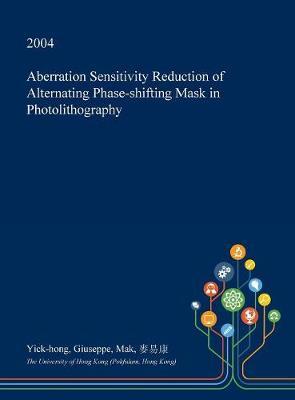Overview
This dissertation, Aberration Sensitivity Reduction of Alternating Phase-shifting Mask in Photolithography by Yick-hong, Giuseppe, Mak, 麥易康, was obtained from The University of Hong Kong (Pokfulam, Hong Kong) and is being sold pursuant to Creative Commons: Attribution 3.0 Hong Kong License. The content of this dissertation has not been altered in any way. We have altered the formatting in order to facilitate the ease of printing and reading of the dissertation. All rights not granted by the above license are retained by the author. Abstract: Abstract of thesis entitled Aberration Sensitivity Reduction of Alternating Phase-shifting Mask in Photolithography Submitted by Mak Yick Hong Giuseppe for the degree of Master of Philosophy at the University of Hong Kong in August 2004 In integrated circuit fabrication, photolithography is a promising technique for replicating circuit patterns onto silicon wafers by optical means. Due to the contin- ual shrinkage of electronic devices, resolution enhancement techniques (RETs) are developed to push the resolution limit of photolithography towards an unprecedented level. Alternating phase-shifting masks (PSMs) are RETs which consist of two trans- parent phase regions 180 out of phase. They use the destructive interference of light to produce superior images of narrow dark lines. The successful application of such masks demands a well-controlled phase relationship for the light wave. Aberration is the departure of light propagation from Gaussian optics, or the departure of light wavefront shape from sphericity. This optical defect can affect the phase of light waves, resulting in the degradation of images printed by alternating PSMs. Numerousexperimentsandsimulationshavebeenperformedtodeterminethe sensitivity of alternating PSMs towards aberration, but these empirical results have not yet been explained theoretically. This study therefore first explores the theoretical quantification of aberration sen- sitivity. Image placement error (or image shift) is chosen as the dependent variable. Byextendingthetheoryofapreviouswork, theimageplacementerrorisexpressedasa function of three parameters: effective light source, mask spectrum and aberration. Using computer programs, the formulae are verified by comparing the theoretical im- age shifts with the shifts measured from aerial image simulation. These theories can be applied to any general lithographic condition. The formulae then enable the design of alternating PSMs to be optimized to achieve a low placement error over a chosen set of exposure systems. The aberration of each exposure system in such a set is random and unknown to us, but the aver- age wavefront quality of the entire set is governed by a parameter called mean RMS aberration. Monte Carlo analysis indicates that an optimal phase width (width of phase region) is likely to exist which minimizes the placement error on average. This is confirmed by the theoretical analysis of the optimization problem. The optimal phasewidthisfoundtodecreasewithincreasingmeanRMSaberration. Thereisalso a trade-off between aberration sensitivity and other image quality metrics. An abstract of exactly 357 words DOI: 10.5353/th_b3072124 Subjects: Integrated circuits - MasksAberrationPhotolithography
Full Product Details
Author: Yick-Hong Giuseppe Mak ,
麥易康
Publisher: Open Dissertation Press
Imprint: Open Dissertation Press
Dimensions:
Width: 21.60cm
, Height: 0.60cm
, Length: 27.90cm
Weight: 0.522kg
ISBN: 9781374725881
ISBN 10: 1374725889
Publication Date: 27 January 2017
Audience:
General/trade
,
General
Format: Hardback
Publisher's Status: Active
Availability: Available To Order

We have confirmation that this item is in stock with the supplier. It will be ordered in for you and dispatched immediately.



